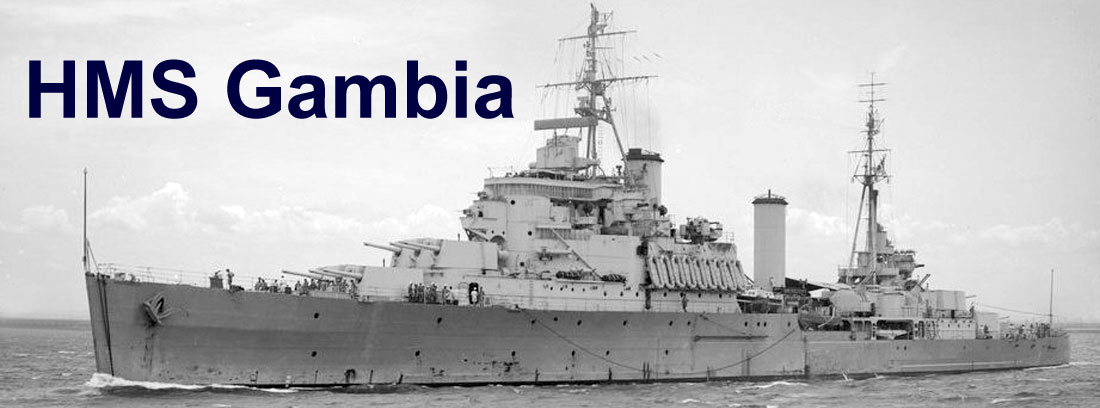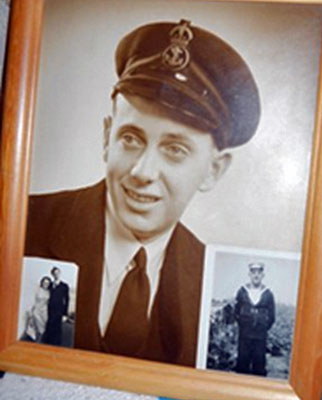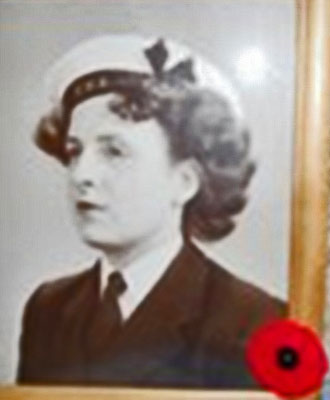
Cliff Hand
 Cliff was an Engineroom Artificer 4th Class on HMS Gambia for the 1948/49 commission. He wrote in the original HMS Gambia website guestbook on November 29, 2011:
Cliff was an Engineroom Artificer 4th Class on HMS Gambia for the 1948/49 commission. He wrote in the original HMS Gambia website guestbook on November 29, 2011:
I was born in 1927 in Manchester, and called for National Service in 1946, took a trade test in Devonport dockyard on the old monitor HMS Roberts and served as an E.R.A. I spent a few months on HMS Valiant. Then did 20 months on the mineseeper HMS Seagull doing sweeping of port entries etc, one thing I recently learned is that HMS Seagull was the first ship in the RN. to be an all welded hull.
My last six months in the RN was as a 4th class E.R.A. on HMS Gambia in and out of drydock in Devonport dockyard, working on boiler room maintenance. On leaving the RN I joined the Blue Funnel line and sailed on a variety of ships as an engineer, leaving them in 1956, and then immigrated to Vancouver Canada in 1957. I have been retired for over 20 years.
In July 2017, Cliff wrote me an email expanding on his story:
As I am close to 90 years old I may not recall events as they happened.but will be close enough as to what happened to me.
I was raised in Manchester, and was an engineering apprentice, when called up in 1946. I had stated that I wanted to be an E. R. A, and was told that they were all full up but go as a fleet air arm mechanic, so was sent to do basic training and while there was told that I should have gone as an E. R. A., so was sent to Plymouth to take the trade test. The test was the "Gib and Cotter" made out of rough steel pieces all by hand filing and chipping. they gave you 40 hours to make it so I was there for week staying in the Devonport barracks. I took the test in the machine shop on board the old monitor ship "Roberts", I was the only one doing the test. and had a Chief P. O. watching over me the whole time. Anyway I passed and became a 5th class E. R. A. I was was sent to the old battleship "Valiant" tied up along with some other ship being used for training seamen for several different trades.
While there I was assisting in one of the main boiler rooms, what I still remember that you went through the armour deck to get below that level, and as the stoke holds were air pressured entry was through a laddered shaft, and to get past the armor deck there was a set of chain blocks to lift a section of this 4" thick deck to get below that level. I understand that when the ship was at action stations these steel doors were lowered, and those inside stayed there, not a good feeling.
After a few months there I was sent to the survey minesweeper "Seagull". She was a twin screw turbine driven ship and in looking up detail of her years later I read that she was built in 1938 and this is what surprised me... "She was the first ship in the Royal Navy to be built with an all welded hull." We did wreck survey, mine clearing and other work in several ports in northern waters. I became a 4th class E R A by this tine which carried the rank of P. O.
I do not know how many old service men can say this..but it came to mind that while I was on the "Seagull" we spliced the "Main Brace" on the birth of Prince Charles. Being in a P. O. mess we had a double tot of neat rum, lower decks were always served 2/1 water/rum. I remember that ship was canteen messing, where each mess appointed a steward who collected the days ration from the stores, prepared the meals then took them to the Galley where the cook did his bit. That type of feeding was far better that larger ships, where the food was little and poor quality. After a year she came back to Plymouth and I was sent to the "Gambia" which was at that time along side in Devonport dockyard undergoing a major refit.
It was about six months later that I got demobbed and returned to Manchester. I did not stay there long for I soon joined the merchant navy as a junior engineer with Blue Funnel line sailing to the far east and Australia. I stayed there with them until I got all my tickets which was about 7 years. Sad for me to recall that Blue funnel had about 90 ships at the start of the WWII, they lost 44 during the war and during the years I was with them a busy rebuilding program was ongoing, I sailed on some new, some Liberty ships and some very old, a coal burner, where 60 Chinese firemen shoveled 100 tons a day in to three doubled ended Scotch boilers.
I enjoyed all those years and Blue funnel was a great company to work for, and at one time I believe the were the largest private owned shipping company in the world, and now all gone.....what has gone wrong with our world!!
After leaving Holt's in 1956 my wife and I came to Canada where we have now lived for 60 happy years. I worked for an American mining machinery company for a lot of years doing lots of things but have now been retired for over 25 years, living on Vancouver Island.
 Cliff also sent the picture of his sister. He wrote:
Cliff also sent the picture of his sister. He wrote:
My sister joined the Wrens in 1941, trained as a coder/decoder and served on the Queen Mary for over three years sailing unescorted back and forth to New York carrying troops. She was on it on when many senior military and government personnel travelled, and also on it when in collision with an escort ship that zigged instead of zagged, several hundred died on the vessel that sank, no stopping in those days to pick survivors.
The ship the Queen Mary collided with on the morning of October 2, 1942, was the C-class light cruiser, HMS Curacoa. The Queen Mary was travelling at 28.5 knots and cut HMS Curacoa in two; 337 officers and men of her crew were lost.
The story of the collision can be found on World War II Today.